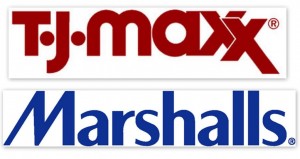 Stocks in the U.S. fell on Tuesday in a selloff, with the major indexes reaching their lows for the session during trading in the afternoon. Driving the selloff were retail stocks, after disappointing earnings reports were given for TJX Companies and Staples.
Stocks in the U.S. fell on Tuesday in a selloff, with the major indexes reaching their lows for the session during trading in the afternoon. Driving the selloff were retail stocks, after disappointing earnings reports were given for TJX Companies and Staples.
Each of the 10 primary sector indexes for the S&P 500 were down and close to three quarters of the Nasdaq listed names dropped on the day.
The top five biggest decliners in the S&P 500 were retail stocks. Included in that list was TJX Companies which dropped 7.6% to end the day $53,95, after the Marshalls and TJ Maxx store owner reported quarterly revenue that was lower than had been expected.
Other companies declining on the day included Urban Outfitters, which dropped to $32.98 or 8.8%; Best Buy, which fell to $24.66 a drop of 5.6%; and Pet Smart, which dropped to $62.19 a drop of 4.7%.
However, Home Depot saw its shares rise by 1.9% to end the day $77.96, following announcement by the CFO of the company that sales for May were strong taking away the sting of its results for the first quarter that were disappointing because of the severe winter.
Current-quarter earnings were estimated by Dick Sporting Goods far below the estimate of analysts. The sporting goods retailer cut its 2014 full year adjusted earnings as well as sales for same stores growth because of weak demand for hunting and golf products. Dick’s stock plummeted to $43.60 a drop of 18%.
The Dow Jones average dropped on the day by 137.55, while the S&P 500 was off 12.35 and the Nasdaq was down 28.92.
Equities have dropped by over 1% since the S&P 500 and Dow hit record highs at closing on May 13. Investors have looked for new signs that confirm the U.S. economy is accelerating that they had hoped would already have taken place.
For four consecutive sessions, the number of companies on the Nasdaq that hit lows of 52 weeks (55), exceeded those that hit highs of 52 weeks (38).
